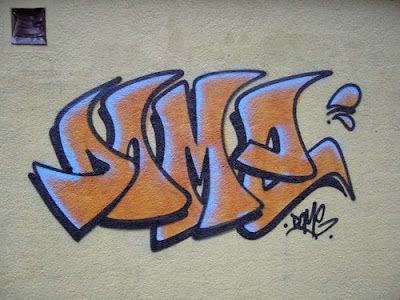Graffiti: Art or Vandalism? Exploring the Boundaries of Street Expression
Walk down almost any city street, and you're bound to encounter it: a splash of color on a brick wall, a cryptic message scrawled beneath a bridge, a vibrant mural transforming an otherwise ordinary building. Graffiti. It's a ubiquitous presence in our urban landscapes, yet its presence sparks a debate as old as time – is it art or is it a crime?
This question, seemingly simple, is actually far more nuanced than it appears. On the surface, the answer might seem straightforward. Defacing private property without permission is illegal, making some forms of graffiti a clear act of vandalism. But what about the elaborate murals that transform drab spaces into open-air art galleries? What about the politically charged graffiti that serves as a form of public commentary? Suddenly, the lines become blurred, forcing us to consider the intent, the execution, and the context of what we deem "art" and what we categorize as "crime."
The very nature of graffiti – its often-anonymous creation, its public display, its defiance of traditional art spaces – fuels this ongoing debate. Some view it as a form of rebellion, a visual outcry against societal norms, while others see it as a blight on our cities, a sign of urban decay and disrespect for property. This dichotomy is further complicated by the fact that graffiti itself is incredibly diverse. It can range from simple tags – stylized signatures sprayed on surfaces – to elaborate murals that take days to execute and rival the detail and artistry found in traditional galleries.
The debate surrounding graffiti is not merely philosophical; it has tangible implications for artists, city planners, and communities worldwide. Cities grapple with how to discourage vandalism while simultaneously fostering artistic expression. Laws vary drastically from place to place, with some municipalities embracing street art through designated legal walls and community projects, while others crack down on any form of unsanctioned public art.
Ultimately, the question of whether graffiti is art or crime is a subjective one, influenced by personal perspectives, cultural backgrounds, and even individual experiences. What one person perceives as a vibrant expression of creativity, another might view as an act of vandalism. However, engaging in this debate, exploring the historical context, and considering the perspectives of both sides is crucial to fostering a nuanced understanding of this complex and evolving art form.
Advantages and Disadvantages of Graffiti
| Advantages | Disadvantages |
|---|---|
| Can revitalize neglected urban areas | Can contribute to a sense of urban blight if not well-maintained |
| Offers a platform for social and political commentary | May involve the use of toxic materials, posing environmental risks |
| Provides a creative outlet for young people | Clean-up costs can be a burden on taxpayers |
Frequently Asked Questions about Graffiti
1. Is all graffiti illegal?
Not necessarily. Some cities have designated areas for legal graffiti art. Additionally, property owners may grant permission for murals on their buildings. However, graffiti without permission is generally considered illegal vandalism.
2. What is the difference between graffiti and street art?
The terms are often used interchangeably, but some argue that "street art" implies a more deliberate artistic intent, often incorporating larger-scale murals and installations. Graffiti, on the other hand, might encompass a wider range of styles, including tagging and throw-ups.
3. Who are some famous graffiti artists?
Banksy is perhaps the most well-known, but the world of graffiti art boasts many influential figures, including Shepard Fairey (Obey Giant), Keith Haring, and Lady Pink.
4. What are some common techniques used in graffiti?
Spray paint is the most iconic, but artists also employ stencils, markers, paint rollers, and even wheatpaste posters.
5. How can communities address the issue of illegal graffiti while still supporting art?
Creating legal walls, sponsoring community art projects, and engaging in open dialogue with artists are all steps toward finding a balance.
6. Has graffiti always existed?
Forms of public markings and art date back centuries, with examples found in ancient ruins. However, modern graffiti as we know it emerged in the mid-20th century.
7. Why do people create graffiti?
Motivations are diverse and can include self-expression, social commentary, marking territory, or simply the thrill of rebellion.
8. Where can I learn more about graffiti art?
Books like "Subway Art" by Martha Cooper and Henry Chalfant and "Street Art Today" by Bjørn van Pouderoijen offer comprehensive overviews. Online resources like StreetArtNews and the Google Street Art Project also provide a glimpse into this global art movement.
The debate surrounding graffiti—art or vandalism?—is complex and likely to continue for generations to come. What’s undeniable, however, is the impact it has on our urban landscapes and the conversations it sparks about public space, artistic expression, and the very nature of art itself. By approaching this topic with an open mind and a willingness to understand the perspectives of both sides, we can better appreciate the complexity and nuance of this ever-evolving art form.
Unveiling the enigma free printable skull tattoo designs
Willoughby ohio your local news source
Conquering the commander scene a guide to templar knight mtg decks













